Allison Hurd's Blog, page 2
October 27, 2019
Scream Queens: Hell to Healing on the Big Screen
Last post was about the different types of feminine horror. I spoke about this with my friend, horror aficionado Glenys Packer, who had a lot of great insight into modern horror and the feminine. So, naturally, I pawned off my blogging responsibility on her, and she knocked it out of the park! I hope you enjoy!
Female suffering has long been as much a staple of the horror genre as haunted houses and axe-wielding killers. From the rape-and-revenge slasher films that became popular in the 60s and 70s, to various adaptations of Shirley Jackson’s The Haunting of Hill House, to the terrifying Japanese and Korean horror films that took the US by storm in the early 2000s, viewers have been watching scream queens, final girls and ghosts alike fight fear, trauma and sadness for decades. In so many of these stories, however, even if she survives the female character is left, ultimately, a victim—of spirits, of her attackers, of her own mind—and the viewers are left with a vague sense of ‘how do you come back from that.’ These stories aren’t about recovering, they’re simply about surviving.

Laurie Strode: 1978 & 2018
Laurie Strode (Jaime Lee Curtis) of the Halloween franchise is a prime example: again and again she survives Michael Meyers, but when we see her in the 2018 sequel Halloween, she has become a paranoid and troubled older woman focused entirely on the man who has been hunting her since she was a teen. Older women are rarely allowed to be badass on screen, so getting to see Curtis at the age of 60 kicking butt and taking names was thrilling—but while watching I couldn’t help but feel sad as well, because the character’s entire life was defined by the trauma inflicted on her. Her family shunned her, she was focused and obsessed only with defeating Meyers. She was alive, but she never moved past that.
In a not insignificant number of more modern films, however, we see female protagonists actively facing the source of their trauma, not simply beating the thing that’s trying to kill them. It’s a twist on the last girl standing trope that leaves us with an actual path to recovery. We see this in Ari Aster’s Midsommar, in Robert Eggers’ The Witch, in the 2018 remake of Dario Argento’s Suspiria. The new generation of female horror protagonists in all three of these examples survive terrible, frightening and heartbreaking ordeals just like their predecessors—but the survival isn’t the ultimate point, the ultimate point is that they heal, and instead find a place where, to quote Midsommar, they “feel held.”
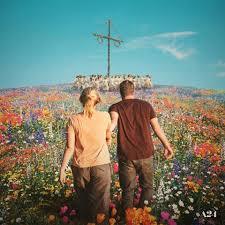
Midsommar, 2019
Horror often operates on a good-vs-evil narrative; you have your protagonist and the “good guys” verses the killer/ghost/demon/cult/etc. In Midsommar Dani is faced with the strange community of Hårga, in The Witch Thomasin is isolated with her family by woods supposedly haunted by a witch, and in Suspiria Susie learns that the teachers at her dance academy are much more sinister than they seem.
Classic horror films might go like this: Dani would find a way to escape the evil commune and walk off into the sunset as a last girl standing, having lost her friends, boyfriend and most of her clothes. Thomasin might find a prophecy that tells her how to defeat the witch. Susie would expose the teachers for what they are and put an end to the evil academy.
Spoilers: that isn’t how any of those movies go.

The Witch, 2015
On top of what we initially perceive as the “evil bad guys” in the films, Dani is also reeling from the tragic loss of her sister and parents in a murder-suicide, Thomasin is fighting the fear and paranoia of her family and the truth that they will turn on her without hesitation, and Susie is alone in a new country, certain only that she’s meant for more than her life in rural Ohio had set her up for.
In none of these instances are the protagonists presented with a handy prophecy or tool for the destruction of the perceived “bad guys,” instead they must navigate the situation on their own, and in all three cases they wind up realizing that what they thought was evil was actually what they were looking for all along. This, in many ways, is an exact opposite to the last girl standing character arc in revenge films like I Spit on Your Grave, or slashers like Texas Chainsaw Massacre or Halloween.
At the end of Halloween Laurie is left with the nightmares of what she has lived through, at the end of Midsommar, Dani has found a place where the viewer knows she will heal.
With the #MeToo movement, the fight for transgender rights, the fight for reproductive rights, the push for more intersectional feminism among countless other gender related movements coming to the forefront of people’s minds, it’s not a far leap to see why movies that show women recovering and conquering are becoming more popular. More and more we are aware that it’s not enough to simply punish those who have tormented you. Unlike movies which end, life keeps moving after trauma, there’s always the question of what happens next. Seeing Dani, Thomasin and Susie rise from the ruins of their struggles to positions of joy and power will, for me at least, always feel more cathartic than seeing a woman kill her rapists and then leave me wondering just how many years she’s going to have to spend in therapy and what a toll this will take on her life.
Last girls may survive, but this new wave of horror queens thrive.
Thanks to Glenys for this great walk through! Like her thoughts? Well good news! She has tons more (including fiction and original art)! Check her out on tumblr and Twitter!
October 13, 2019
All Thrills, No Frills: Feminine Horror
It’s time to get spoopy! My book feeds are full of people reading horror novels, scary movies are on every television, and here I am to talk about what I (and I think others) define as “feminine horror.”
When we think about horror, we think monsters, psychological thrillers, and body horror. I think lately, however, we’re starting to see more social horror a la “Black Mirror” and “Bluebeard’s Bride.”
One of these we see not infrequently throughout all the other styles? Things that mimic the fear of everyday life for those who identify more feminine.
Gaslighting
Taking its name from the film “Gas Light,” where characters make the gas lamps flicker to upset a woman character and then lie about it until she doubts her own sanity, gaslighting is all about making you doubt yourself. Horror has this all the time–the teen who “doesn’t think they should be doing this,” the woman who “knows she saw someone.” While this isn’t always a woman, the reason it’s “feminine” horror is that generally the concern stems from more traditionally feminine traits like intuition and is countered by what is considered more “masculine” presumptions of reasonableness. Freddy Krueger doesn’t make sense. But that doesn’t make him unreal, or less a problem for the (majority women) he attacks.

Gas Light, 1944
Again, this is not something only women experience, but it is something that I would say the majority of women have experienced multiple times. This makes it particularly scary for some because there’s always a fear that our own senses aren’t trustworthy. It’s the concern that fearing every man walking behind you is “rude” but trusting all of them makes you partially responsible if they are one of the people not to be trusted.
This also applies to “Stepford Wives” scenarios, where control of your own thoughts is in question or outright removed.
Invasion
It’s coming from inside the house.
Someone breathing on your neck.
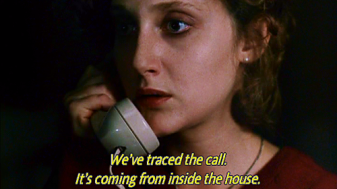
When a Stranger Calls, 2006
Invasion of our boundaries–emotional or physical, home or personal–is a classic of horror. This is another that I’m sure many relate to, but is a calculus that again is something almost cultural to those who identify with the feminine. There are so many narratives that are about defining women by the way their agency can be stripped or their persons violated that the extra fear this has for feminine presenting people is that it has happened to us, even if it’s “just” being kissed against our will, or followed from the subway. The sense of wondering if your autonomy is safe, if you’re alone, and what to do if you’re not is a distinctly hair-raising part of horror stories that resonate with the feminine from the footsteps that follow you all the way to sexual violence and possession.
This is also true of emotional invasion as well–being pushed into something you’re not ready for, using manipulation or threats, or “grooming” someone for future violence, like “Silence of the Lambs.”
Exclusion
This is something I strongly associate with the feminine. The idea is that masculine characters must protect the feminine ones, but what it results in is people without tools or knowledge trying to fight while hamstrung. Mina in Dracula who isn’t warned about the dangers of the handsome stranger. Any women told to “stay here” while screams and growls emanate from beyond the locked door. It’s meant as kindness, but it one of the scariest things to watch. Imagine the unbelievable balance of wanting to help, but being told that your help will only make things worse. Imagine watching or listening to people you love die, having taken with them the only real weapons or means of access to you. Terrifying!

Paranormal Activity, 2007
Now, this is of course not always something done to women only, either in real life or in movies. Interestingly, we’re seeing a bit of a flip in the script so to speak with movies like “Get Out” capitalizing on traditional feminine horror tropes to express other marginalized status, in this case race. It’s a really strong association with “the other,” with the outsider who must be both corralled and coddled.

Get Out, 2017
What movies or books do you think contain these concepts? Are there any others you would add to the list of “feminine horror?”
October 6, 2019
Not Your Fight, But Still Your Problem
What with the hullabaloo about women winning Hugos, Trail of Lightning and the discussion around appropriation, and indeed, the advent of October and the costumed holidays celebrated throughout North America, it seems like the book world has been in a tizzy about respectful dialogue and celebration of ideas.
There are literally thousands of articles on systemic injustice, feminism, inclusion, cultural appropriation and the rest out there. They come in all sorts of formats depending on your needs–emotional, rational, scientific, synopsis, broad, specific, you name it. So I won’t reinvent the wheel today. If you’d like to engage with what feminists and anti-racist, queer-friendly activists and community members are saying, you may find it in their own words and think about it.
Today, I’ll focus on what to do about problems you see when you’re not in the in-group.
First, a disclaimer about the word “problematic.” It has broad meanings but the intent every time is that this is someone whose creations or words should be considered carefully before consuming, to consult your own conscience, and to alert yourself to issues that perhaps you hadn’t considered before. Sometimes all that needs to be done is to acknowledge that nothing is perfect; and sometimes we need to do things more drastic.
So what are those things?
It’s hard enough to know when it’s your group. But it’s extra hard when it’s an issue that is specific to a group for which you have little or no context.

Oh God, I am not equipped for this.
For me, it’s mostly about listening. It’s so rare for groups have their brawls in front of outsiders, if one makes it into my line of sight, it generally means that it’s something important to that group, and something that I, as outsider, wouldn’t have thought about. So, most of it is educating myself on the issues the in-group brings up.
It’s important at this stage to realize it’s generally hard for us to pick sides. Some things are quite obvious and transcend cultures, but when it’s something specific to a group we can’t really get involved. I can’t forgive anyone, I can’t blame anyone. No one’s asked me to be the judge or jury here, so my opinion is unwelcome and unhelpful.
Once I’m educated, have listened and remained as neutral as I can, it’s time to figure out what I, as outsider, have to do.
I’ll be honest, most of the time, all that needs to be done is that I listen and learn.
If I need to do more, it comes down to two things: what do in group-people I personally know and care about have to say about the matter, and what causes the least harm.
It looks like this:
Do people I know and care about have strong feelings? I’ll follow their lead if yes.
If not, who is hurt if I participate in this work? Who is hurt if I do not?
Expect better from people who now know more.
Make sure to educate others about the issues if it comes up.
In the instance of Trail of Lightning, and the complaints that a native person who is not a member of the nation she’s portraying has missed some of the significance of the characters, the math looks like this:
I don’t know any Diné people. I hadn’t known about the topics at issue. If I participate in reading, I might upset some Dine people, but I support a native woman who clearly seems to be attempting to be respectful, and have learned of new Navajo writers whose work I can support. Plus, I’ve learned something important that I will be sure to communicate as necessary to people who are not in the in-group.
Therefore, the end result is to realize there’s room to do better, to be careful my own self with these topics, and likely still support the author in so much as I won’t disregard her work.

An approximation of how hard you should be listening.
And that’s really it! Listen, stay neutral until you have all the facts, consider the harm done, and do what your conscience requires. It is okay if what it requires is “keep doing what you’re doing.” But we have to be aware that sometimes support also means picking a side in a complex conversation, and sometimes that has real consequences to real people. So we mustn’t disregard others’ opinions or our own ability to do harm even if we do not intend to do so.
All we can do is be willing to apologize, to listen, to take care of our people with kindness and remember that the goal, always, always to move into a world where all of our voices are heard and respected.
September 22, 2019
Live Creatively – Stop Writing
If you’ve done much writing at all, you’ll have heard advice from dozens of professionals on how to write with all your talent and stay on schedule. There are exercises and outlining rules and reminders that it’s not about inspiration, it’s about perspiration!
And today I’d like to add my own.
My favorite way to get ready to write is to do anything else for awhile.
Books
I can’t claim credit for this one. I don’t think he was the first to correlate the two, but Stephen King is credited with the quite pithy phrase “if you don’t have time to read, you don’t have time to write.”
 I always have time to read. I bring a book with me to every appointment and am quite upset to report that none of my doctors, mechanics, DMV employees or salon appointments ever start even the smallest bit late, despite my attempts to get them to chill out so I can finish a page or two. Inconsiderate of my time though they are, I still try to make plenty of time to read. Finding new ideas, new techniques, taking flights of the imagination, it’s wonderful to sink into someone else’s skillset and let go for a bit.
I always have time to read. I bring a book with me to every appointment and am quite upset to report that none of my doctors, mechanics, DMV employees or salon appointments ever start even the smallest bit late, despite my attempts to get them to chill out so I can finish a page or two. Inconsiderate of my time though they are, I still try to make plenty of time to read. Finding new ideas, new techniques, taking flights of the imagination, it’s wonderful to sink into someone else’s skillset and let go for a bit.
Music
I’ve spoken at length about how obsessed I am with music while writing, but music while not writing is also a great way to get ready for novels. I regularly go to concerts and orchestras or stop to listen to street performers…there’s so much inspiration in instruments and voices. They’re great for character studies, for dissolving into emotion, and–for me at least–a sense of the magical in the physical world. People all with their emotions surging, abandoning themselves in vibrations in the air, resonating with each other and their own memories, how can it be anything but transcendental.
[image error]
Amorphis at the Theatre of Living Arts
On top of that, music is demonstrably shown to increase brain activity, so you really open yourself up to new thoughts while relaxing from the active forms of thinking. At the last concert I attended, I got an idea for several characters and a short story!
Museums
Artwork! History! Ambiance! Whatever you go for, it’s hard to walk out of a museum without feeling inspired. So many stories start with poignant images or stories that stick with us. So go find some!
[image error]
The Joy of Yiddish by Mel Bochner, Jewish Museum
TV/Movies/Plays
Like with reading, these can be lovely, immersive yet less-active way to study how stories are told, how characters take shape, and different ways to convey important moments. Most folks have one of these they’re most keen on, so playing with different media can be really useful. And, of course, it’s fun. As I’m writing this, I’m watching Great British Bake Off which is fantastic for seeing different ways people demonstrate kindness, stress, and competence. It’s also just delightful and soothes me. We can always use a bit of soothing.
Build or Make
Construct something! Make your own drawings or paintings or sculptures! This can be soothing, but it also can help get us into the “shower thought” headspace when we relax the parts of our brains used to handling executive functions like decision making, increase dopamine, and distract us. Many folks aware of mindfulness or meditation might see the similarities in those practices, and it’s often true! Doing something that’s not terribly complex but is something that makes us happy and keeps us distracted can be wonderful for turning thoughts internally, and allow us to find new ideas or solutions to old problems that we might not have stumbled across if we bashed ourselves against them head on.
[image error]
Nothing more tedious than twisting wire. Part of an ongoing artwork.
Travel
I feel a bit yuppie saying this one, but it’s true! Go somewhere new! That can be Europe or on safari or a park, historical site, or hell, even a bar. One of the bars I’ve written into Feeding Frenzy is based on an actual establishment I’ve been to which I found so perfect for the atmosphere I was trying to build. I didn’t go with that intent, I just happened to be there and later on could draw on that memory. I keep a notebook with me when I’m going anywhere new so I can scribble a few impressions in case I want to reference them later.
Learning
If I ever stop learning, go ahead and tip me overboard, please. New skills, new facts, new techniques, we can always pick something up! Some of my best experiences have been learning how to play harmonica, to fence, and how to solder different metals. None of these are directly related to anything I write about, but again, it helps me think of things in new ways, to flesh out things I might know about some characters, and new opportunities for places where I can enter that “shower thought” space. Check your town or local colleges for adult education or class monitoring.

So, if you’re serious about writing, stop this instant!
September 15, 2019
Not Enough Words
Editing continues apace. I really like editing–I find it so much easier to tweak things already on the page than to figure out what words need to come next. It’s so soothing to feel that sort of “snap” of the puzzle pieces fall into place, to know that you’ve expressed what you wanted to say the way you wanted to say it. I love that feeling that I get when I get wrapped in the story and see the world I’ve been trying to build exactly as I imagined it.

A short post this week. I’m preparing some longer ones, and working on editing and writing a short story so I’m going to conserve my words for those projects.
Wish me patience, inspiration, and an end to the headache I’ve been fighting!
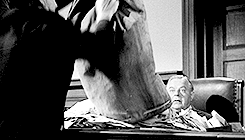
I can tell I’ll be using too many letters!
September 8, 2019
Two Years Is Enough Anticipation
A while back I spoke of , due to a few unrelated yet troubling posts made by other authors and asked readers of my blog or other social media sites to help me select a name.
So I’m pleased to announce that I’ve finished the first draft of my third book, Thicker Than Water!
Freakin’ finally, amirite?
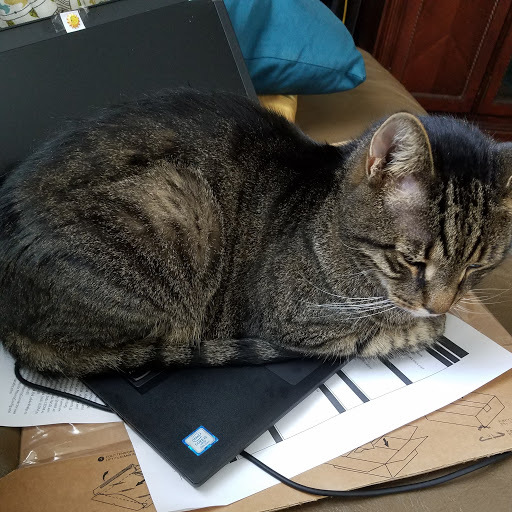
An example of the obstacles I faced.
This book took me a lot longer to write than either of the first two books, and decidedly longer than I had intended. The reasons are manifold–new job, new losses, new obstacles etc. but I think the main thing is that this book is the darkest I’m intending to write, and that took a lot of energy from me.
Those of you who know me or who have followed my thoughts before know that I have very strong feelings about an author’s responsibility to their characters and their audience when it comes to discussing trauma. I take it quite seriously, and it means getting inside the head of my characters and reaching for their pain. It was slow going, learning about the different ways people deal with the events I talk about, figuring in how that would alter later reactions to things, and then, of course, trying to capture that in a way that makes sense.
Not to say this book is all sad. I hope to show a lot of what people have been asking about–how they came into this life, why they treat each other like they do, and what makes them tick. It was always the intention for book 3 to be a bit of the origin story and I’m really excited to introduce several characters I hope you will love as much as I do.
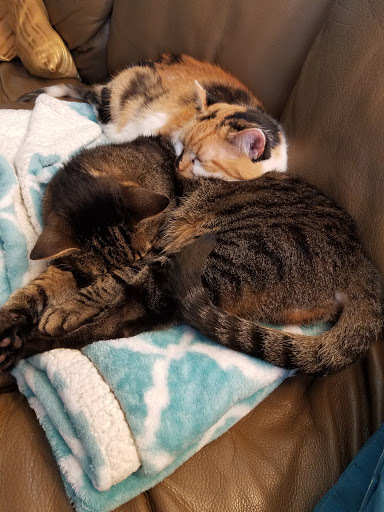
Many naps were required to finish this book!
So, now on to editing, which has always been my stronger suit, I think. I hope to have my first beta readers on it by Halloween, and we’ll see how long it takes to finalize things from there.
If you’ve read books 1 and 2 and are interested in being a beta reader, please let me know! I try to have about 6 or 7 folks who are not editors read it before I send it for final clean up, as I think writing is always collaboration between author and audience, so might as well get a couple rehearsals in before the live performance.
Very motivated to get Thicker Than Water into your hands and out of my head!
September 1, 2019
Those Who Do the Work
Labor Day always makes me a bit morose. It’s the end of summer, and it’s supposed to be a day to commemorate the efforts of those who fought for workers’ rights–the 8 hour day, OSHA, age restrictions, unions and so on. And yet tomorrow so many of the people still the least protected will continue working while we all go to our cookouts.
On top of that, this weekend’s seen police brutality, people protecting nazis while decrying antifascists, mass shootings, and landfall of one of the strongest hurricanes we’ve seen.
In short, the real world isn’t doing so hot right now.
Personally, I am also frustrated by my own creative goals. I took a detour from my book for a short story, and then, well life keeps happening and now I am woefully behind, unsure which fire needs my attention first.
So I’m looking for the good. I’m proud of the people in my life who stand up for those who would be silenced. I’m humbled by seeing the care so many take with each other, even when times are hard and patience is in short supply. I am moved by the efforts I see individuals taking to support each other and eke out safer, happier, more prosperous spaces.

Which is to say, thanks to all of you who do the work that needed to be done. Your efforts are seen and not only do you make the world around you a bit better, you encourage others to keep doing their small part as well. Thank you for your work. And thank you to all working in other capacities, too. We are a society, and you are valued.
I hope as the season changes, so too do the mindsets that keep us at loggerheads. Wishing you all a safe, productive, kind September, and a fervent hope that finally my third book will be done soon!
August 25, 2019
The Stories We Tell Ourselves
Studies upon studies have been done about who are villains are, who are heroes are, and what in the world happened to make the shift from one set to another.
I’ve been thinking about that, and about the creation of stories we see in the mainstream.
There’s been two trends I’ve seen a lot of recently: the same stories repackaged, and the flawed hero taking a stand against an institution.

The heroes I think show where we want to be, what our artists–who are often the canaries in the mine for the ails before us–think we need now. And the fact that we keep seeing movies telling the same stories-often, quite literally–suggests to me that the rest of the nation is nervous.
Our artists want us to stand up to the powers that be, and the powers that be are circling the wagons.
In 2019 we’ve had: sequels, biopics of the greats from the 1960s through 1980s, reboots, live action retellings of previously beloved cartoons…and Marvel.
[image error]
Really, there aren’t a lot of gambles out there. There’s a lot of nostalgia, a lot of marginal returns and pressing the “profit button” without any of the risks of new franchises like were more common in the 90s and early 2000s. It feels a bit like our mainstream media is stagnating.
Our artists on the other hand are not. Music is going in new and unexpected directions. Hip-hoperas and plays about controversial topics, new museums, new books, are sprouting up everywhere! It’s lovely! But it’s being stymied.
In my mind, this represents a very real and pervasive interaction between the people and the power. Executives are scared. They see the blood in the water, but aren’t sure where it’s coming from yet. Is it recession? Is it increased sanctions and taxes? Is it popular uprising? We don’t know, but the safe, easy projects taking front stage even as artists are more talented and numerous than they’ve ever been before is, I think, noteworthy.
And what about the stories that do make it through?
In the 40s the enemy were who were fighting. In the 80s the enemy was who we expected to fight. In the 90s, post Watergate, the enemy was the establishment.
Post 9-11 we went to the people we were told to fear, and now?
In literature, which I think tends to lead cinema in many ways, we’ve followed a similar theme, but the last decade, we’ve been really interested in the anti-hero, the shades of grey, and sticking up for what is moral over what is legal.

We’re seeing that in movies, too. Marvel, Star Wars, pop icons…all of them say our flaws don’t excuse us from changing the world, and what is good, and what is easy are not the same. So many of our heroes are at the intersection of status quo and revolution, and choosing to stand with the people who have more to lose. Think Tony Stark and Cap, The Rebellion, Freddie Mercury, The Beatles. In books, think Poppy War. Think A Memory Called Empire and The Traitor Baru Cormorant. These books all feature someone who could be part of the elites who keep folks down, but who seek, through whatever means necessary, to shelter those who are voiceless.
My books feature this as well; it’s a story that I think many of us hope to take to heart, or at least will give heart to others. When society stops believing in our future, it is time to invest in ourselves. We can make things right. We can change the path. We just need heroes, whether that’s the person who shelters the body of another person, or who invites others into their state of grace.
I hope you create. Make art, share it widely, embolden the silenced, and whenever possible, choose kindness. Take a risk on someone–be bold!
August 18, 2019
Kill Your Darlings – Not Like That, You Murderer!
You’ve heard the expression “you have to kill your darlings,” right? I think there’s a lot of confusion about which darlings and how much killing should be involved.

Originally, the saying was meant to help remove “precious” scenes. Anything that doesn’t contribute, is “so beautiful” but wordy etc. should be ruthlessly removed by the hopeful writer. This is writing advice that has been perpetuated since at least the early 1900s, if not earlier than that.
But these days, it seems that more and more authors see characters as their darlings, and friends, these poor characters are treated like Punch and Judy.
In the sense of writing, I’m wholeheartedly in favor of curtailing word count. As much as I love getting good books that can double as stepping stools, the trend towards enormous books really needs a limit somewhere. I think perhaps the novella resurgence is a reaction to the 600+ page monstrosities we’ve been seeing, and I get it.
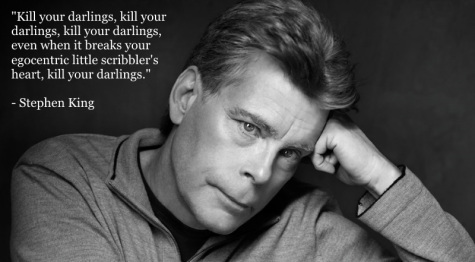
For me, when editing, I have different read-throughs to check for specific areas. One of them is the number of filler words, metaphors, and so on, and I try to remove as many as I can, especially in sections that are meant to be taut. I also check for words I overuse, character habits that either mysteriously disappeared and need to be reinserted, or more frequently, reminding myself that even though it took me a year to write it, the audience will likely take less time to read it, and therefore doesn’t need to be reminded every chapter of the same elements.
I think authors should be brutal on themselves in this regard. Concision might not always be best policy, but for me, I’d much rather shine a few gems and then leave folks wanting more, rather than having to be told I talked too much. More I can provide. Just wait a bit.
In terms of characters, I do think it’s more interesting when characters are in conflict. But here’s the thing: what’s fascinating to me isn’t necessarily how many different ways the character gets attacked, it’s the consequences of battling on those different fronts. A laundry list of pain inflicted on the character tends to make me zone out. It either makes each individual pain seem trivial, or it verges into a sort of sadism which is not a kink I choose to explore.
When I’m writing, the stories I’m crafting are those at pivotal moments full of dilemmas and danger for my characters, it’s true. And I do beat the tar out of them. But my focus isn’t on the hurt itself, it’s on how they got there and what will become of them after they’ve made whatever decision. What made them decide to get in this fight? Having chosen to fight rather than run or concede, what will that mean in the future?

“Senua’s Sacrifice”
Consequence, not casualty, is what I choose to explore, and how I interpret “killing my darlings.” We drag them through hell not to sightsee, but to watch how the character returns triumphantly.
What are some good examples of literary darlingcide and charactercide?
August 11, 2019
FYPM: A Poem
Today I woke up and
checked the posts other people made
on websites graphic designers created.
Then I took my earthenware mug
some other soul fired
and a book another author wrote
to the great outside,
where I reveled in the plants someone else planted
until it was time to go
to the restaurant a chef crafted recipes for
and a museum filled with art that visionary hands shaped.
And none of it was mine.
And all of it was for me.
I do not know how to compare
A garden with a sandwich
Or a mug with a manuscript.
But I do know, for certain,
That today was more beautiful with them
Than I could ever express
With anything other than the joy in my heart
And the coins in my pocket.





